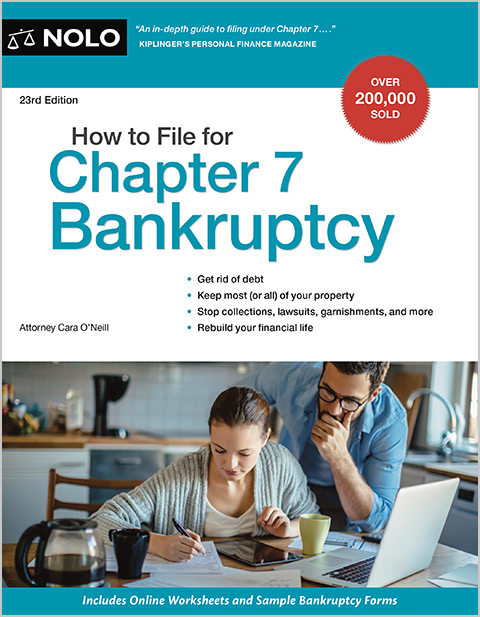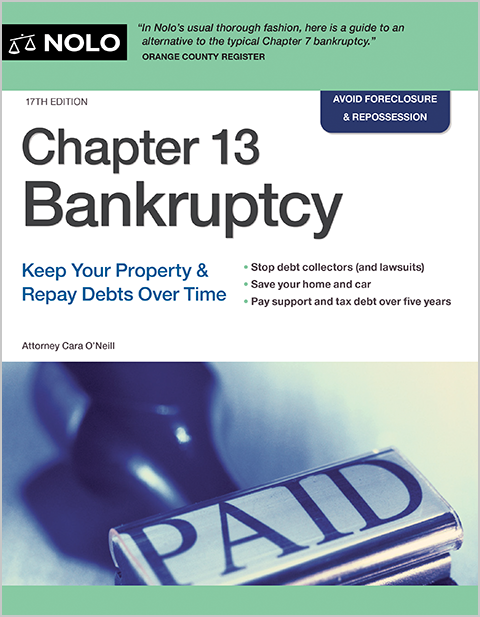Here's what to expect at the 341 hearing in your Chapter 13 bankruptcy.
When you file for Chapter 13 bankruptcy, you must go to a mandatory hearing called the meeting of creditors before your case can be approved or "confirmed" by the court. The meeting of creditors is a short hearing that allows the trustee appointed to your case to verify information in your bankruptcy papers.
Even so, it's common for people to worry about the meeting. The simplest way to avoid being overwhelmed is to know what to expect before you go. Read on to learn more about what happens at a Chapter 13 bankruptcy meeting of creditors.
- The Purpose of the Chapter 13 Meeting of Creditors
- Who Can Attend the Chapter 13 Meeting of Creditors
- What to Expect at the Chapter 13 Meeting of Creditors
- Concluding the Chapter 13 Meeting of Creditors
- When the Trustee Objects to Your Repayment Plan
- What Happens in Chapter 13 Bankruptcy?
- Speak With a Bankruptcy Lawyer
- Need More Bankruptcy Help?
The Purpose of the Chapter 13 Meeting of Creditors
The Chapter 13 trustee is responsible for ensuring that you're paying all of your disposable income to your unsecured creditors (creditors whose debt isn't secured by collateral, such as most credit cards) through your repayment plan.
The Chapter 13 meeting of creditors allows the bankruptcy trustee and any creditors who attend to do the following:
- check your identification
- verify information in your bankruptcy paperwork
- ask about bankruptcy documents sent before the hearing
- ask questions about your financial affairs
- discuss your proposed repayment plan, and
- explain where to make your monthly repayment plan payments.
Who Can Attend the Chapter 13 Meeting of Creditors
The meeting is more informal than a typical hearing. A judge won't be in attendance. Instead, the trustee will conduct the meeting, and it's likely to be in a conference room rather than a courtroom.
Here's who might be there:
Your creditors. Creditors can come to the meeting and ask questions, but most won't attend. A creditor who suspects bankruptcy fraud might send a representative to gather information. Other adversarial creditors, such as a disgruntled business partner or an ex-spouse, tend to make appearances, too. These creditors can raise the intensity of a meeting, but you shouldn't worry about it too much—most people know if they risk an appearance by an angry creditor.
The public. The meeting of creditors is open to the public, so anyone can observe your hearing. Further, the other Chapter 13 debtors will typically be in the same hearing room during your examination. Here's the benefit: If you're not first on the calendar, you'll be able to watch the examination take place and know what to do when it's your turn.
What to Expect at the Chapter 13 Meeting of Creditors
You can expect the trustee to schedule other debtors during the same meeting hour. When you arrive at the hearing, you'll want to check the calendar to see where your case falls. The calendar will be posted next to the door or in the hearing room.
The trustee will likely start the meeting by taking a roll call. Next, the trustee will explain the meeting procedures. During that time, it's a good idea to take out your identification and proof of social security number so you'll be ready to present it to the trustee when your case gets called.
Here's what will happen when it's your turn.
- You'll provide your identification and sit at the trustee's desk
- The trustee will place you under oath.
- The trustee will ask questions.
- Any creditors in attendance will ask questions.
- The trustee will either continue or conclude the meeting.
It's the Chapter 13 trustee's job to verify the information in your petition and make sure you're paying all of your disposable income to your unsecured creditors.
If a bankruptcy attorney represents you, your lawyer will probably be able to predict what the trustee will ask you. A straightforward hearing will take between five and ten minutes.
Concluding the Chapter 13 Meeting of Creditors
A Chapter 13 trustee satisfied with your paperwork and repayment plan will conclude your hearing. You won't be required to attend another hearing before the trustee.
A trustee who needs more information can continue the hearing to another date. You might not need to show up if you resolve the issue beforehand.
When the Trustee Objects to Your Repayment Plan
After the meeting, a trustee who believes that you should be paying more to your unsecured creditors will likely object to the confirmation of your Chapter 13 repayment plan by filing a motion to dismiss.
If you receive a motion to dismiss, you'll need to do one of the following things:
- correct the issue to the trustee's satisfaction, or
- show the judge why your plan should be approved.
You'll likely have limited time to file an opposition to the trustee's motion with the court. You should plan to argue your position at the confirmation hearing. Learn how to oppose a Chapter 13 motion to dismiss.
What Happens in Chapter 13 Bankruptcy?
Chapter 13 is a long process that takes three to five years to complete. Find out what to expect in Chapter 13 bankruptcy by reading the following:
Speak With a Bankruptcy Lawyer
A Chapter 13 bankruptcy is more complicated than a Chapter 7 case, so much so that it's almost impossible for someone to complete without a bankruptcy attorney. If you're considering filing for Chapter 13, you'll want to meet with a bankruptcy lawyer, and many offer a free initial consultation.
Need More Bankruptcy Help?
Did you know Nolo has been making the law easy for over fifty years? It's true—and we want to make sure you find what you need. Below you'll find more articles explaining how bankruptcy works. And don't forget that our bankruptcy homepage is the best place to start if you have other questions!
|
Our Editor's Picks for You |
|
|
More Like This |
|
|
Other Articles You Might Like |
What Is a Bankruptcy Discharge? |
|
Helpful Bankruptcy Sites |
We wholeheartedly encourage research and learning, but online articles can't address all bankruptcy issues or the facts of your case. The best way to protect your assets in bankruptcy is by hiring a local bankruptcy lawyer.
- The Purpose of the Chapter 13 Meeting of Creditors
- Who Can Attend the Chapter 13 Meeting of Creditors
- What to Expect at the Chapter 13 Meeting of Creditors
- Concluding the Chapter 13 Meeting of Creditors
- When the Trustee Objects to Your Repayment Plan
- What Happens in Chapter 13 Bankruptcy?
- Speak With a Bankruptcy Lawyer
- Need More Bankruptcy Help?

